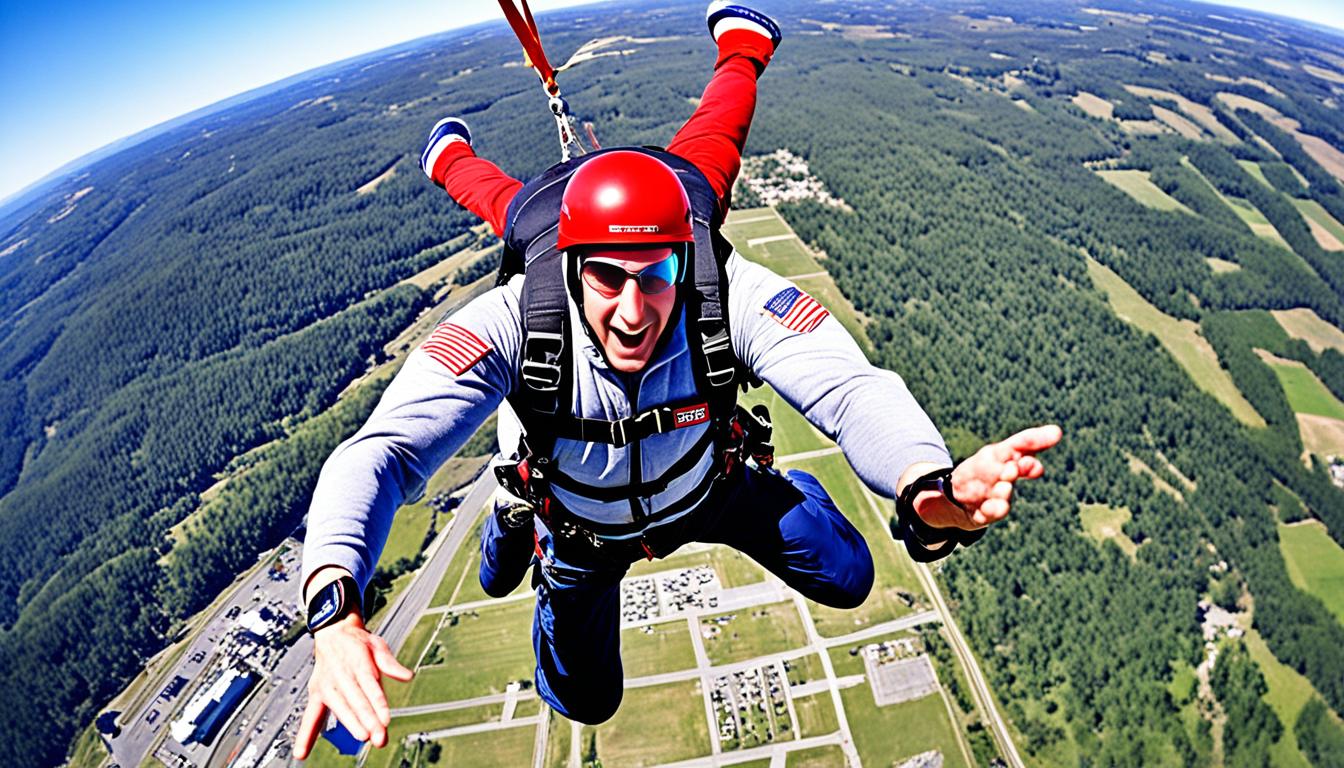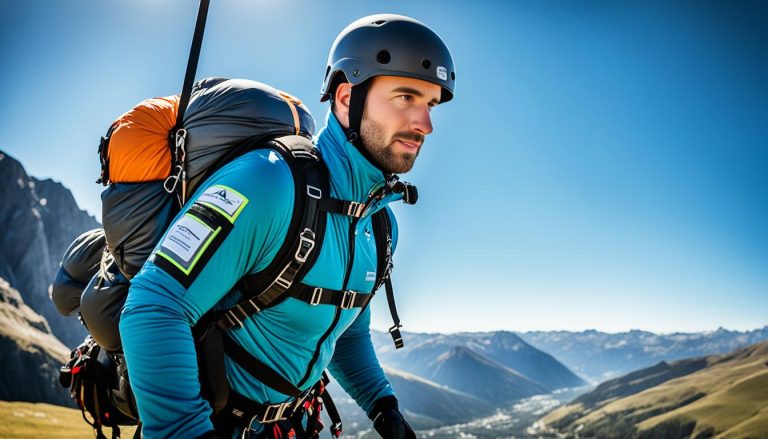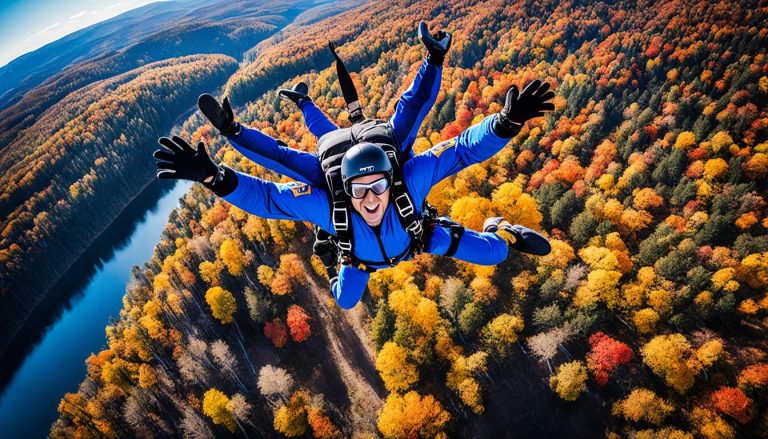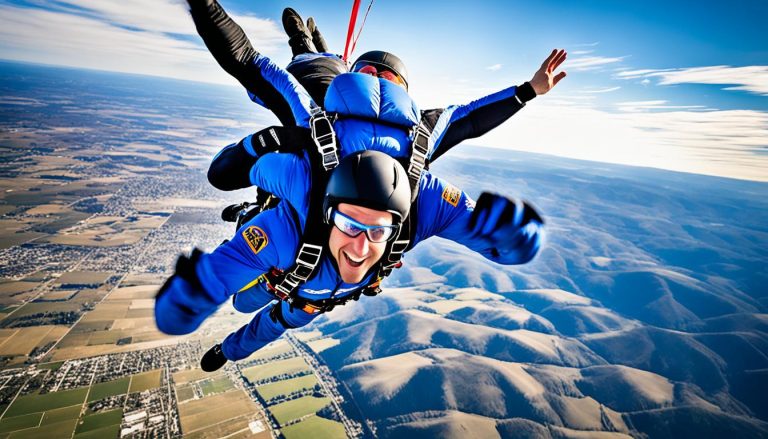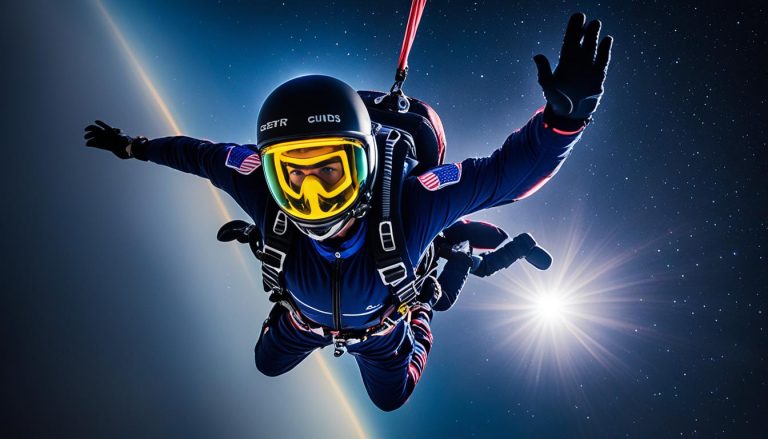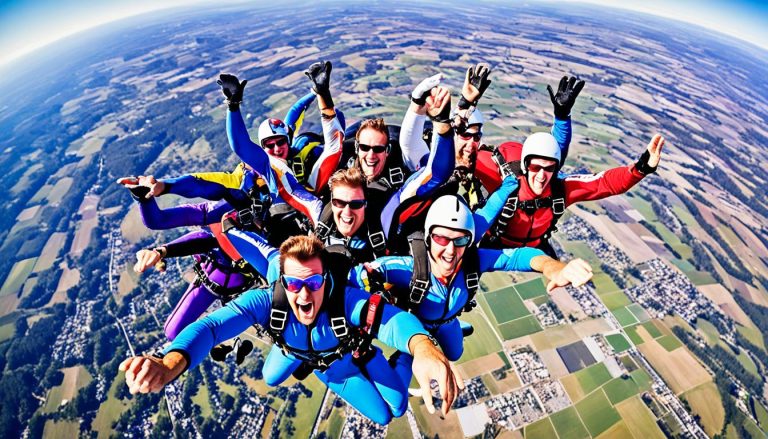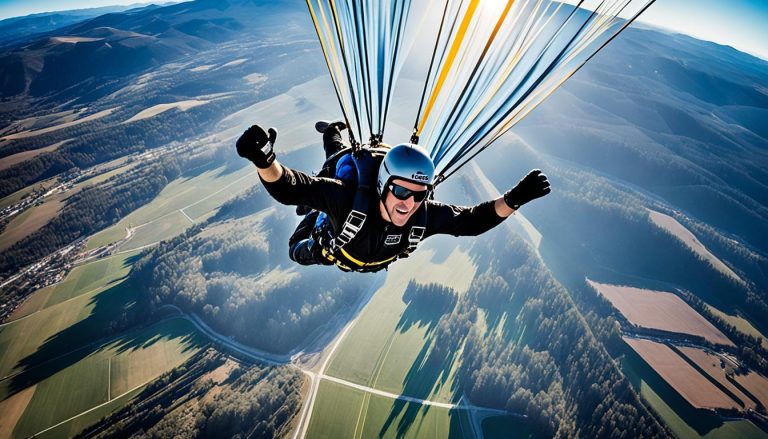Essential Parachuting Techniques Every Jumper Should Know
Parachuting is an exhilarating sport that requires knowledge and mastery of essential techniques to ensure a safe and successful jump. Whether you’re a beginner or an experienced skydiver, understanding these techniques is crucial. In this article, we will explore the various techniques involved in parachuting, from parachute deployment to safe landing. By mastering these essential techniques, you can elevate your skydiving skills and enhance your overall experience.
From basic parachute skills to jumping out of a plane, we will guide you through the safety procedures for parachuting and provide valuable skydiving techniques. If you’re a beginner wondering about skydiving for beginners or an experienced jumper looking to improve your landing techniques, this article will equip you with the necessary knowledge.
One of the key topics we will cover is the parachute deployment process. Understanding how to properly deploy your parachute is essential for a safe and controlled descent. We’ll provide detailed step-by-step instructions and tips to ensure a successful deployment.
Join us as we delve into the world of parachuting, uncovering the essential techniques that every jumper should know. Whether you’re aiming for the thrill of the freefall or the adrenaline rush of the landing, this article will give you the insights and guidance you need to make the most of your skydiving journey.
The Importance of Tracking in Parachuting
Tracking is a fundamental skill in parachuting that allows jumpers to achieve horizontal separation from other jumpers during freefall. By mastering tracking techniques, skydivers can enhance safety and control during jumps.
Forms of Tracking
There are different forms of tracking that skydivers can employ based on their goals and the desired separation from other jumpers:
| Form of Tracking | Body Position | Purpose |
|---|---|---|
| Flat Track | Head down, arms extended forward | To gain maximum horizontal separation |
| Delta Track | Head up, legs extended backward | To cover more vertical distance |
| Angle Track | Angled body position | Combines horizontal and vertical separation |
Each form of tracking requires specific body positions to achieve the desired separation from other jumpers.
Tracking is a vital skill in parachuting, and jumpers must master the appropriate body positions to ensure safe and controlled jumps.
Flat tracking allows jumpers to maximize horizontal separation, which is particularly important during group jumps. It involves assuming a head-down position with arms extended forward, reducing vertical speed and extending track time.
On the other hand, delta tracking focuses on covering more vertical distance. Jumpers extend their legs backward while assuming a head-up position. Delta tracking is useful when there is a need to reach a certain altitude or formation quickly.
Angle tracking combines elements of both flat track and delta track, allowing jumpers to cover both horizontal and vertical distances. This form of tracking requires maintaining an angled body position, striking a balance between flat and head-down.
By mastering these tracking techniques, skydivers can enhance their skills, safely navigate freefall, and achieve controlled separation from other jumpers.
Understanding Flat Track and Delta Track
Flat tracking and delta tracking are two common forms of tracking used in parachuting. These techniques allow jumpers to achieve horizontal and vertical separation from other jumpers during freefall, ensuring safe and controlled jumps.
Flat tracking: Flat tracking is particularly valuable for gaining horizontal separation during the latter part of a skydive when break-off and deployment altitudes are approaching. By minimizing vertical speed, jumpers can extend their track time and maximize horizontal separation. Flat tracking is an effective method for maintaining a safe distance from other jumpers and groups.
Delta tracking: Delta tracking, on the other hand, is primarily used to cover more vertical distance than horizontal. While it may not be the most effective method of separation from a group or other jumpers, delta tracking can be useful for reaching a specific formation or target. Jumpers performing delta tracks should be aware of their vertical separation and adjust their body position accordingly.
The Body Positions in Flat Track and Delta Track
Mastering the body positions and techniques for flat track and delta track is crucial for achieving safe and controlled jumps. Here are the basic body positions for each technique:
| Flat Track | Delta Track |
|---|---|
| Body position: Flat, parallel to the ground | Body position: Slightly arched, creating a delta shape |
| Main focus: Minimize vertical speed, maximize horizontal separation | Main focus: Cover more vertical distance |
By practicing and perfecting these body positions, jumpers can effectively execute flat track and delta track maneuvers, ensuring safe and precise jumps.
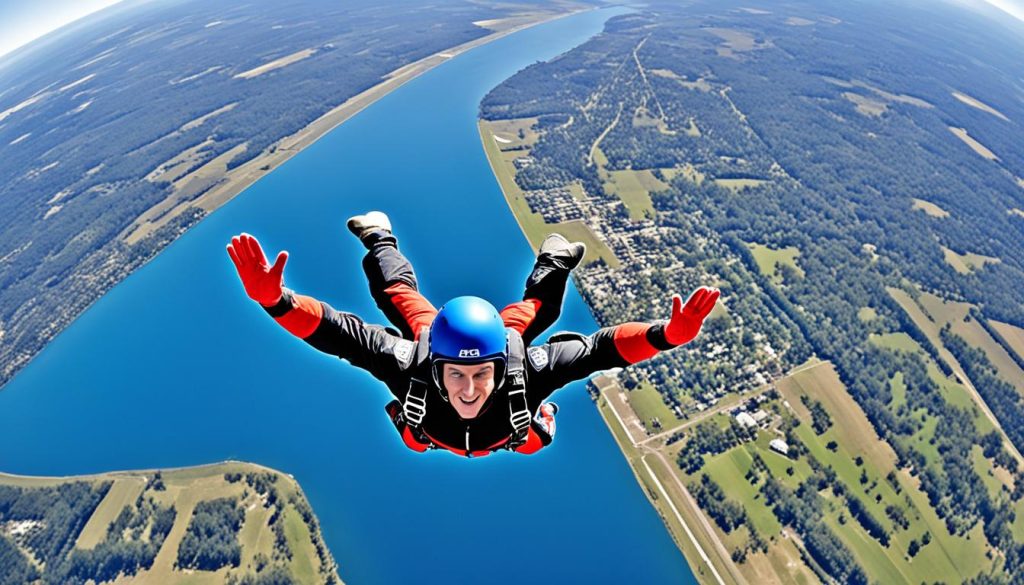
Benefits of Horizontal and Vertical Separation
Horizontal and vertical separation are crucial in parachuting to maintain safety and allow for controlled jumps. Here are the key benefits of achieving both types of separation:
- Horizontal separation: Horizontal separation provides jumpers with distance from other jumpers or groups, reducing the risk of mid-air collisions. It allows individuals to execute maneuvers safely and maintain control over their descent.
- Vertical separation: Vertical separation is important to avoid canopy entanglements. By covering more vertical distance, jumpers reduce the chances of their canopies overlapping with others during deployment and landing.
By understanding and implementing the techniques of flat track and delta track, jumpers can achieve the necessary horizontal and vertical separation, ensuring safe and successful jumps.
Important Tips for Back Tracking
Back tracking is a more advanced technique in parachuting that requires skill and practice. It involves moving backward while freefalling, which can be challenging due to the lack of visual references to the ground. Maintaining the correct body position is crucial for stability and control during back tracking.
In back tracking, the jumper should focus on maintaining a flat back and proper heading. This body position helps in achieving stability and prevents unwanted spinning or tumbling. It is essential to distribute the weight evenly and maintain a balanced position to counteract the backward movement.
One of the challenges of back tracking is the absence of visual references. Unlike forward tracking or other techniques, there is no ground or forward movement to gauge your position or progress. This can make it challenging to maintain the correct heading and stay on track.
To overcome this challenge, it is recommended to jump with an experienced skydiver who can provide guidance and point you in the right direction. They can help you adjust your body position, heading, and monitor your progress to ensure you stay on course.
Adapting to different wind conditions is also crucial in back tracking. Wind can affect your speed and direction, making it necessary to adjust your body position and heading accordingly to maintain stability and control. Being flexible and responsive to changing wind patterns is key to successful back tracking.
Continuous practice and refinement of back tracking technique are essential to ensure safe and controlled jumps. As with any skill, repetition and experience will improve your proficiency and confidence in back tracking. Remember to prioritize safety, seek guidance from experienced instructors, and gradually challenge yourself to more complex and advanced back tracking maneuvers.
Key Tips for Back Tracking:
- Maintain a flat back and proper heading.
- Jump with an experienced skydiver for guidance.
- Adapt to different wind conditions.
- Practice regularly to improve your skills.
Back tracking requires focus and the ability to adapt to different wind conditions. It is important to continuously practice and refine this technique to ensure safe and controlled jumps.
Mastering Angle Tracking
Angle tracking is a unique form of tracking that combines elements of flat track and delta track. It involves maintaining an angled body position during freefall. Angle flyers typically exit the airplane first due to the level of horizontal and vertical separation they can achieve. Mastering angle tracking requires understanding the proper body position, which is somewhere between flat and head down.
Angle tracking allows jumpers to cover both horizontal and vertical distance, making it a versatile technique for various skydiving disciplines. By maintaining the correct body position in angle tracking, jumpers can achieve the desired level of separation from other jumpers. This technique is especially useful for forming formations or covering ground quickly during a jump.
“Angle tracking combines the best of both worlds, allowing us to cover both horizontal and vertical separation in a controlled manner. It’s a technique that requires precision and practice, but the results can be truly exhilarating.”
Learning angle tracking from experienced instructors and practitioners is crucial for proper execution. They can provide guidance on body position, entry and exit techniques, and other important aspects. With their expertise, skydivers can refine their angle tracking skills and maximize the potential of this technique.
Body Position in Angle Tracking
In angle tracking, the body position is a balance between being flat and head down. Jumpers maintain a slight angle with their torso and legs, creating an aerodynamic shape that allows for controlled movement through the air. This body position helps achieve the desired horizontal and vertical separation from other jumpers.
“When mastering angle tracking, it’s crucial to find that perfect balance in body position. Too flat, and you won’t achieve the desired separation. Too head down, and you’ll compromise your horizontal distance. It’s all about finding that sweet spot.”
Jumpers should practice their body position in angle tracking during training jumps and gradually increase the angle as they become more proficient. It’s also important to be aware of the surrounding airspace and maintain proper situational awareness when angle tracking.
Achieving Horizontal and Vertical Separation in Angle Tracking
One of the primary goals of angle tracking is to achieve both horizontal and vertical separation from other jumpers. By maintaining the correct body position and adjusting the angle, jumpers can control their speed and trajectory to cover the desired distance in both planes.
During angle tracking, jumpers can adjust the angle of their body to modify the amount of vertical or horizontal separation they achieve. A steeper angle will result in more vertical separation, while a shallower angle will provide more horizontal separation.
“Finding the right angle and adjusting it accordingly allows angle flyers to achieve the perfect balance between horizontal and vertical separation. It’s like carving through the sky, maintaining control while covering ground.”
It’s important for jumpers to practice and experiment with different angles during training to understand the impact on separation. With time and experience, jumpers can enhance their ability to achieve the desired separation and maximize the potential of angle tracking.
Safety Measures and Considerations in Parachuting
Safety is of utmost importance in the thrilling world of parachuting. To ensure a safe and enjoyable experience, jumpers must adhere to various safety measures and considerations. This section will discuss key precautions, training requirements, and body positioning to minimize risks and maximize safety.
Parachuting Safety Measures
Jumping out of a plane requires careful planning and execution. Here are some safety measures every skydiver should be aware of:
- Undergo proper training: It is crucial to receive comprehensive training from certified instructors. This includes theoretical knowledge, practical exercises, and emergency procedures.
- Follow safety protocols: Adhere to established safety protocols and guidelines provided by the training center or drop zone. These protocols encompass pre-flight checks, gear inspections, and communication protocols while in the air.
- Use reliable equipment: Only jump with well-maintained and certified parachuting equipment. Regular inspections and proper maintenance are essential to ensure the equipment’s integrity.
- Maintain physical fitness: Parachuting requires a certain level of physical fitness. Regular exercise, cardiovascular training, and core strength exercises can enhance overall performance and reduce the risk of injuries.
- Stay updated on weather conditions: Weather plays a significant role in parachute deployments and landings. Stay informed about weather forecasts, wind patterns, and other environmental factors that may affect the jump. Do not jump in adverse weather conditions.
Water Landings
While most jumps involve landing on land, skydivers should also be prepared for water landings. Water landings come with their own set of challenges and safety considerations:
- Proper training: Receive specialized training in water landings from experienced instructors. Learn techniques for entering the water safely and managing the parachute after landing.
- Choose appropriate equipment: Use a parafoil parachute designed for water landings. These parachutes have water-resistant materials and are more suitable for landing in water.
- Follow water landing procedures: Ensure you are familiar with the correct procedures for landing in water, including the proper body position to reduce the risk of injury.
Canopy Formations
Canopy formations involve multiple jumpers who fly their parachutes in close proximity and create formations in the sky. Safety is paramount when participating in canopy formations:
- Training and coordination: Participate in specialized training programs to learn the techniques and safety procedures for canopy formations. Coordination and communication with other jumpers are crucial for safe and successful formations.
- Spacing and clearance: Maintain appropriate spacing between canopies to avoid entanglements and collisions. Respect personal safety zones and follow established flight paths.
- Clear communication: Use hand signals, radio communication, or other agreed-upon methods to communicate with other canopy formation jumpers during flight.
High-Performance Landings
High-performance landings involve advanced maneuvers and techniques to achieve precise and dynamic landings. It is imperative to prioritize safety while attempting high-performance landings:
- Proper training and skill development: Acquire the necessary skills and knowledge through specialized training programs. Work with experienced coaches who can guide you through the intricacies of high-performance landings.
- Gradual progression: Master the fundamental landing techniques before attempting high-performance landings. This includes accurate heading control, flare timing, and effective flaring techniques.
- Risk assessment: Evaluate the conditions, including wind speed, direction, and landing area, before attempting a high-performance landing. Avoid unnecessary risks and adjust your approach accordingly.
Proper Body Position
The correct body position during freefall and landing is crucial for a safe and controlled jump. Improper body positioning can lead to instability and increase the risk of injuries. Here are some key considerations:
- Freefall body position: Maintain a stable and relaxed body position during freefall. Spread your arms and legs slightly to control your fall rate and stability.
- Landing body position: Adopt the appropriate body position for landing, which may vary depending on the landing style. This may involve bending the knees slightly, keeping the feet and knees together, and maintaining an upright posture.
By following these safety measures, understanding water landings, practicing canopy formations, mastering high-performance landings, and maintaining proper body position, skydivers can enjoy a thrilling and safe parachuting experience.
Conclusion
In conclusion, mastering essential parachuting techniques is vital for elevating your skydiving skills and ensuring safe and controlled jumps. By understanding the importance of tracking and the various body positions involved, you can achieve maximum horizontal and vertical separation during freefall. Additionally, observing safety measures such as proper training, seeking guidance from experienced instructors, and following established protocols is crucial.
Remember, parachuting is an exhilarating and challenging sport that demands respect for safety and a commitment to continuous learning. By prioritizing safety and acquiring the necessary skills, you can enjoy an unforgettable parachuting experience while minimizing the risks involved. Be sure to undergo comprehensive training, practice regularly, and stay informed about the latest safety guidelines to further enhance your skydiving journey.
So, whether you’re a beginner or an experienced skydiver, don’t underestimate the importance of mastering these essential techniques. By doing so, you can elevate your skydiving skills, enhance your overall experience, and embark on thrilling adventures in the world of parachuting. So gear up, take the plunge, and soar through the skies with confidence!

